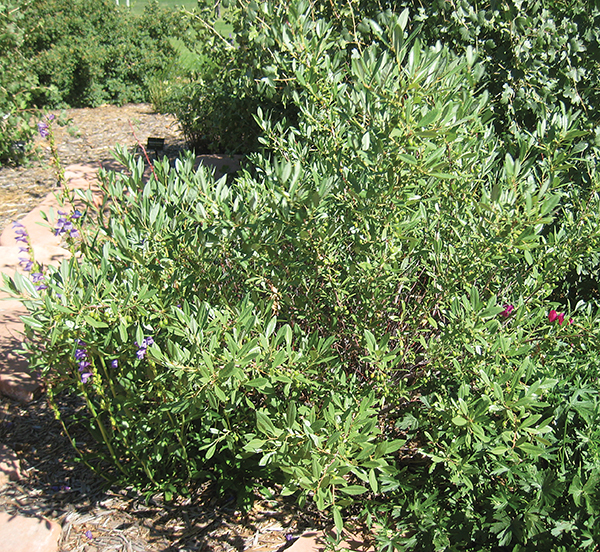-

4
Sand Cherry
Prunus pumila L. var. besseyi (L.H. Bailey) Gleason
Synonym: Prunus besseyi L.H. Bailey


This glossy-leaved shrub has a number of positive characteristics. It can be used in low-water landscapes and is covered with fragrant white flowers in spring followed by edible fruit (mainly for plum-like jams and jellies and use by wildlife). Some fruit may be too astringent for consumption. It is unknown if sand cherry seeds contain the cyanogenic glucosides responsible for the toxicity and astringency of other Prunus species, so it’s probably best to leave the seeds to the birds. The variety ‘Pawnee Buttes’ varies somewhat in form—some plants are better classified as ‘low growing’ whereas others are ‘prostrate’. The latter have almost bonsai-like growth, and their twisted, ancient-looking branches add interest to the winter garden. ‘Pawnee Buttes’ can suffer some dieback in exposed sites. This shrub is also susceptible to powdery mildew (less water, full sun, and good air circulation can help with this problem), but this appears to be mainly a cosmetic issue. It is very cold tolerant and can reproduce both through suckering and reseeding. Plant more than one sand cherry for fruit production. Fall color can be spectacular.
Height: 3-5’
Width: 3-5’
Water needs: dry to moist
Exposure: full sun
Availability in nurseries: common
Native range: northern Rocky Mountain region, central U.S., and central Canada (WY native)
Plant family: Rosaceae

Photo by Jennifer Thompson


